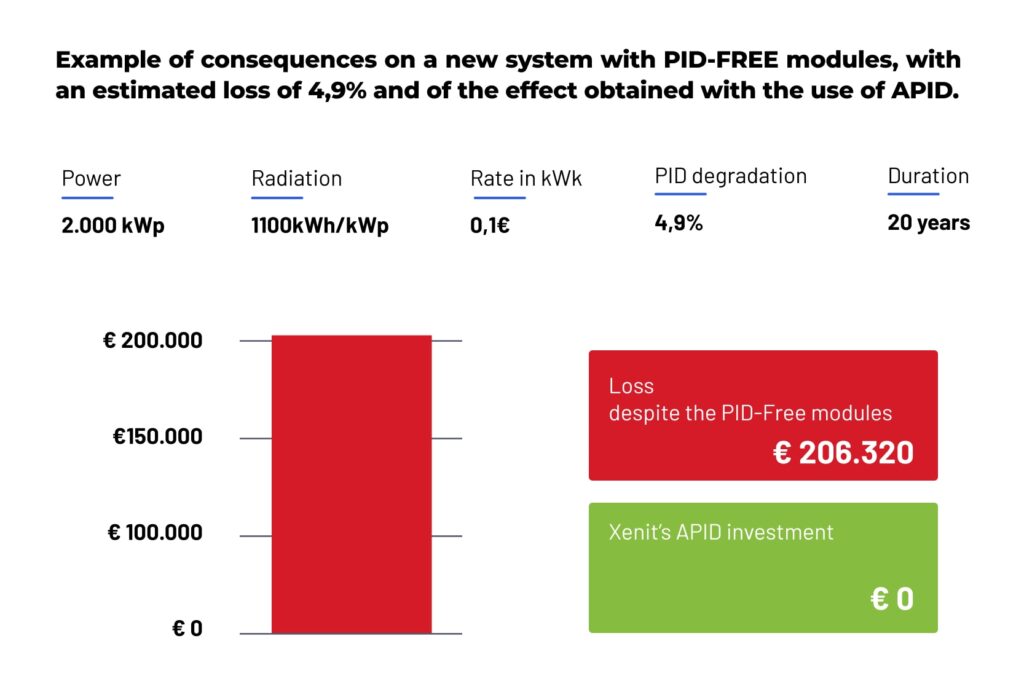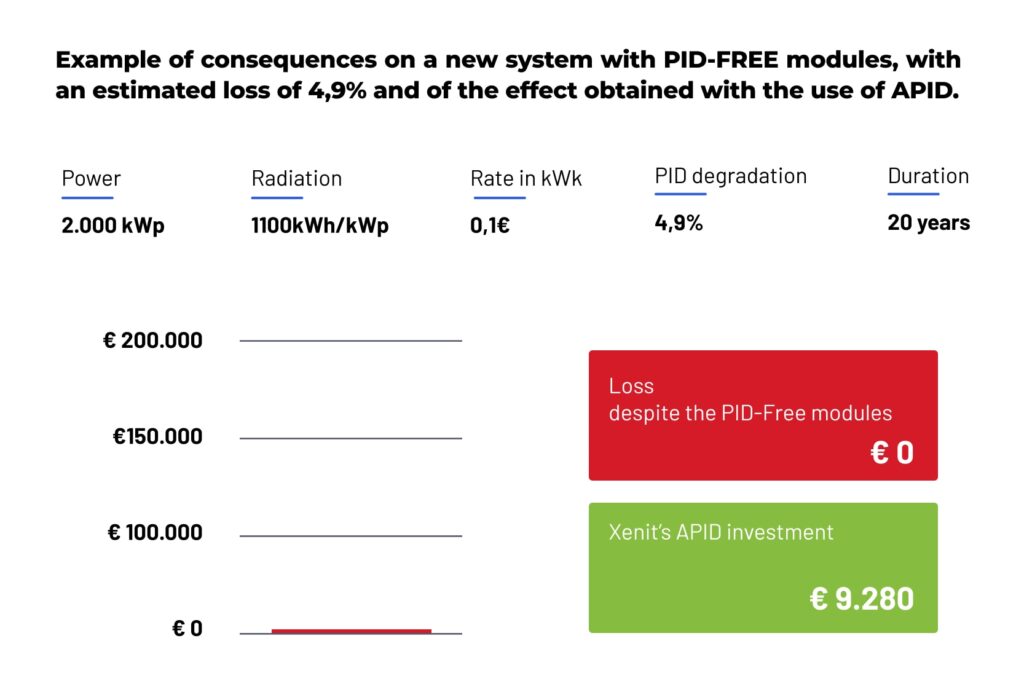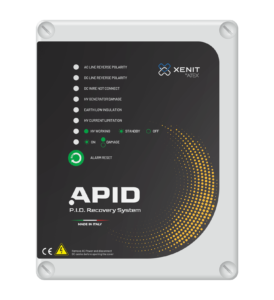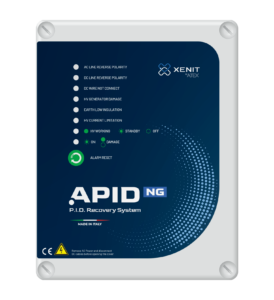
What is photovoltaic PID?
Description of Potential Induced Degradation
The acronym PID stands for Potential Induced Degradation. The transition to ever larger solar systems, and thus the use of strings with increasingly high voltages, has led to negative voltages on the cells with respect to the ground, such as to cause a polarisation that leads to short circuiting and the progressive shutdown of the modules.
This generates a marked reduction in the performance of the entire system, with a degradation that can reach up to 70%.
The polarisation effect of the cells is caused by eddy currents that form between the cells and the metal support structure of the modules, connected to the earth. It consists of a migration of negative charges from the materials utilised in the photovoltaic modules through the frame that is usually connected to the ground.
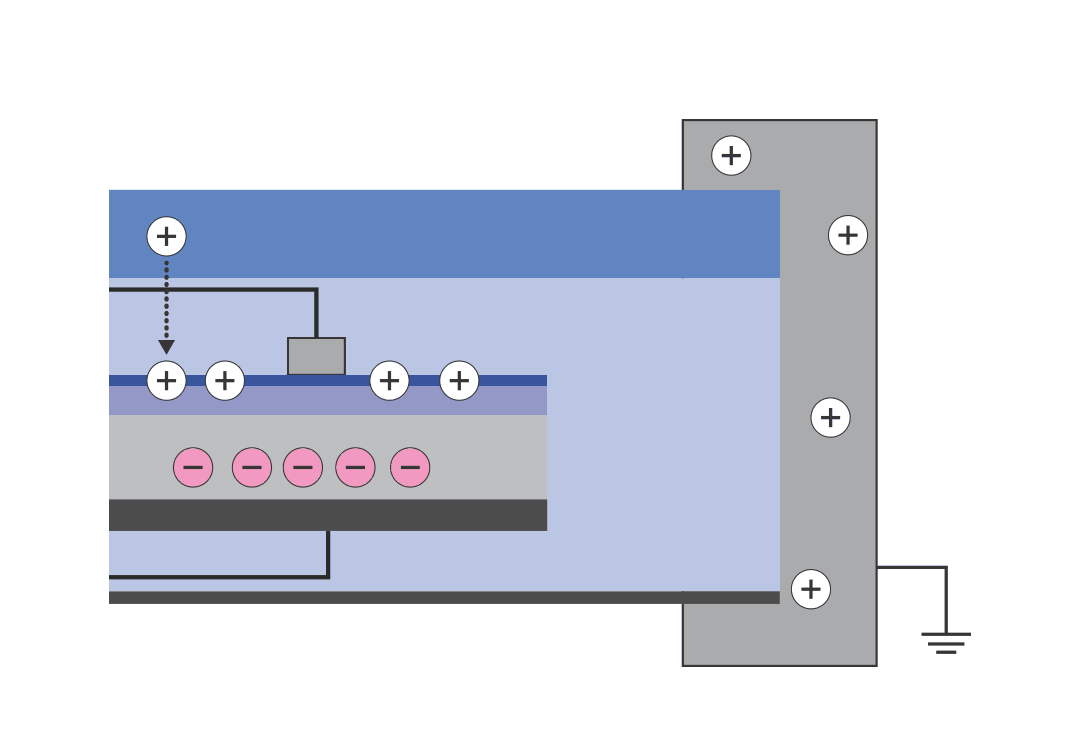
Over time, the continuous presence of Potential Induced Degradation causes a flattening of the IV curve of the modules and a constant loss of power.
In modules with P-Type cells, the effect is greater in those closest to the negative pole of the string, whilst in modules with N-Type cells – which require grounding of the positive pole – the effect is greater in those closest to the positive pole.
Unlike the other causes of deterioration, PID is the only one that – if stopped in time – allows the system to be restored and thus the power of the solar system to be reinstated.
The PID-Free
or High PID Resistance modules
are not immune to PID and can degrade by up to 5%.
The regulation states that a module is PID-Free or High PID Resistance if it passes the IEC 62804 standard test.
STANDARD
Test conditions:
power loss
P.I.D. Free
Modules are considered as PID- Free or as having High PID Resistance when, following testing, there is a loss of less than 5% and no serious defects are detected.
Find out how APID, our PID solution,
protects your investment
It is estimated that, with a power loss of 5% due to the phenomenon of PID, there will be an economic loss of approximately €206,320 over a 20-year period. Rather, if we install the APID devices immediately, as a means of prevention of the PID phenomenon, the investment will be €9,280 without any loss, accompanied by a ROI (for purchasing the APID) of 12 months.
Causes of PID
Why does PID develop?
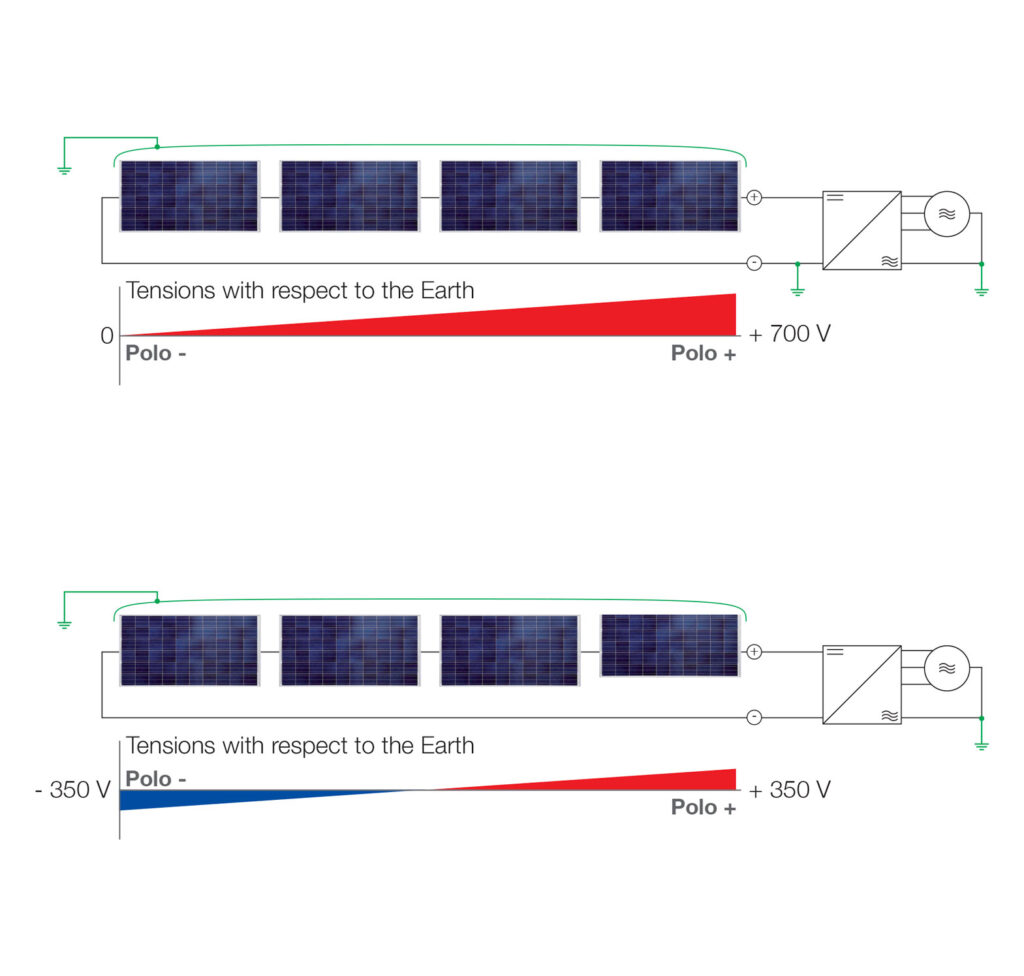
In photovoltaic systems installed before 2008, the negative pole (or positive, depending on the type of cell) of the strings is connected to the ground.
This connection, however, is no longer compatible with the structure of the new generation of Transformerless inverters (without an isolation transformer) because it would create a short circuit to the ground. This causes the string voltage to “centre” itself on the zero potential of the ground during operation of the inverter. If, between the positive and the negative of a string, we have 700V, the positive pole of the string will be at about +350V with respect to the ground, whilst the negative pole will be at about -350V. The voltages may be different due to asymmetries resulting from the design of the inverter but the principle remains the same.
These high voltages on the poles trigger eddy currents that cross the entire module, to the point of causing the photovoltaic PID effect. It is important to specify that the solar modules are certified for positive operating voltages of 1000V DC and not for negative voltages.
In N-Type modules (Sunpower or BenQ of the old generation), which need to ground the positive pole, the problem is the replacement of the inverters. This is because in the models currently installed, it is not possible to place the positive on the ground. Hence the reason behind PID, which leads to a decrease in the power of the solar panel.
The other causes include:
Effects of Potential Induced Degradation
The effects caused by the presence of photovoltaic PID can be contained and reabsorbed over time, only if action is promptly taken.
The degradation and loss of power of the solar system can upset the business plan conceived in the design phase of a photovoltaic system, with very serious and exponential economic consequences.
An Italian example
Below is an example of economic damage due to Potential Induced Degradation. Here, we see the 1MW photovoltaic unit of one of our Italian customers, where the degradation from PID – which began in 2012 – reached 6.69% in two years, with an economic damage of €66,000. If the APID had not been installed in 2014, by 2020 the percentage of power loss would have reached -15%, with a total economic loss of €525,000.
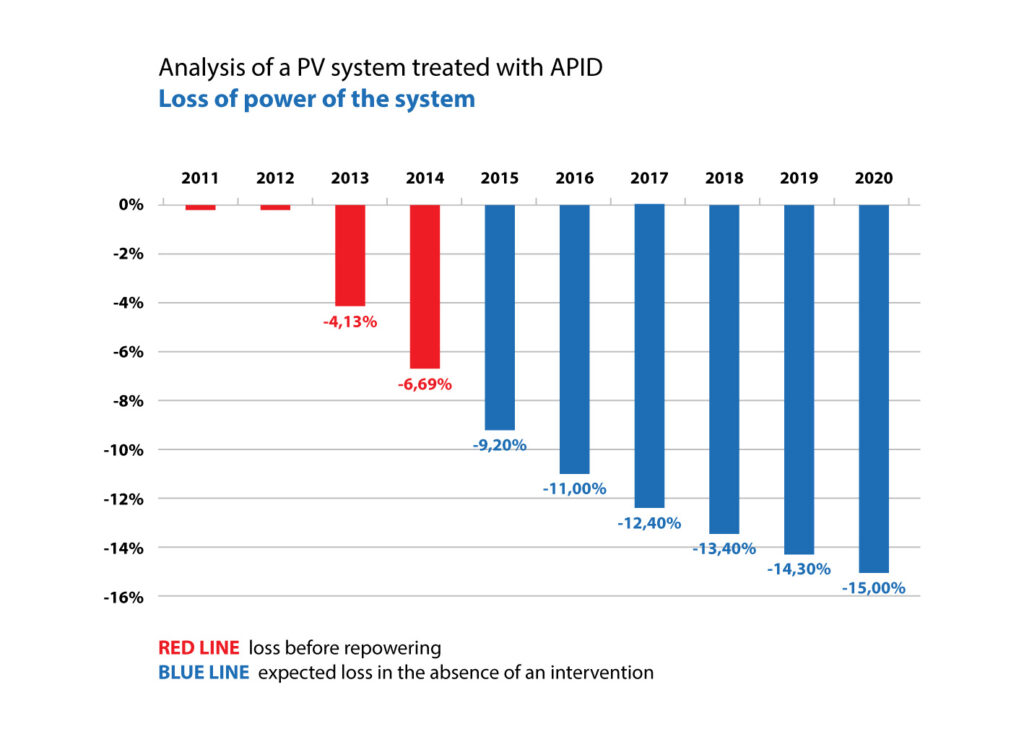
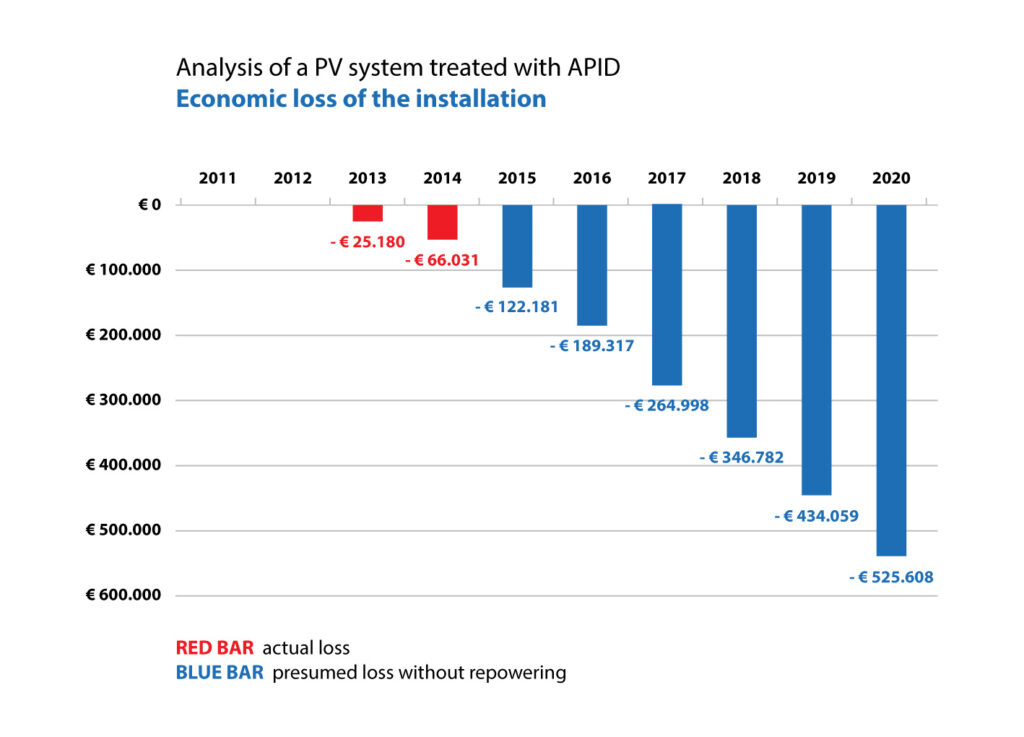
The technical effects of degradation and power loss in photovoltaic panels are basically two:
- P.I.D. polarisation which causes the shutdown of mono/polycrystalline photovoltaic cells with P-Type/N-Type technologies
- Electro corrosion of the TCO, a phenomenon that triggers an electrochemical reaction between moisture and sodium inside the module cover glass, caused by leakage currents between cells and ground. The damage is irreversible and requires replacement of the modules.
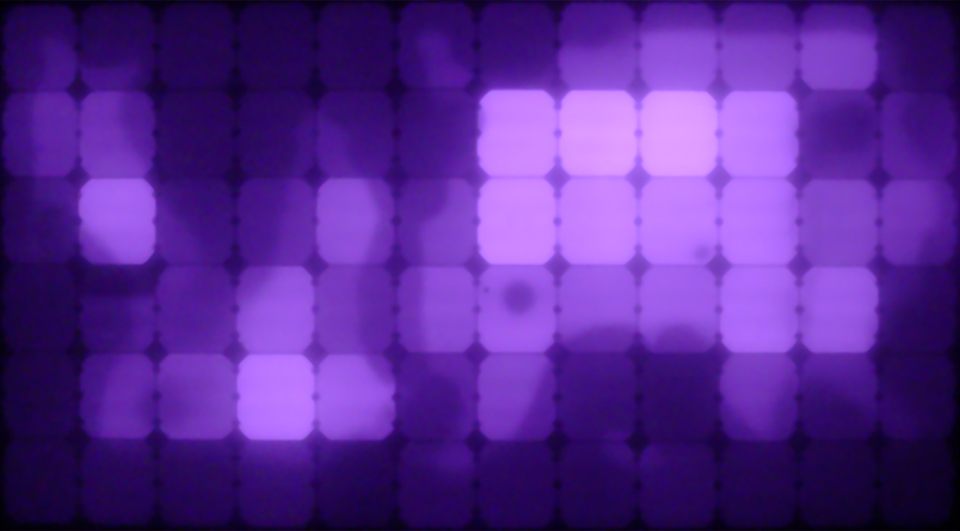
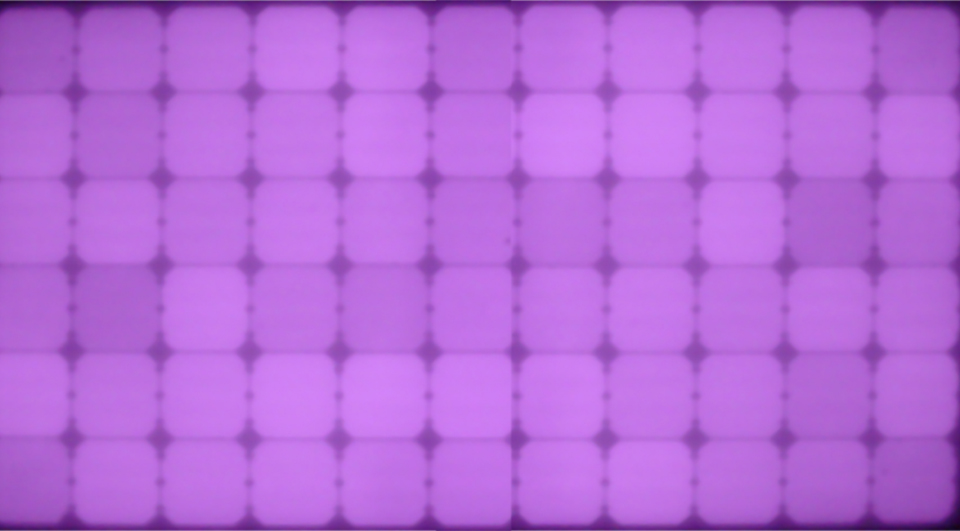
APID ![]()
the solution to photovoltaic PID
APID is a universal voltage generator (max. 1000v) developed for the recovery of modules affected by photovoltaic P.I.D. and for the prevention of the onset of the phenomenon on those at risk. In systems that have been installed for some time, it recovers the lost power up to 100% and protects new systems from the photovoltaic P.I.D. effect from their first day of life.
Do you want a consultation or a quote?
Allow us to help you


